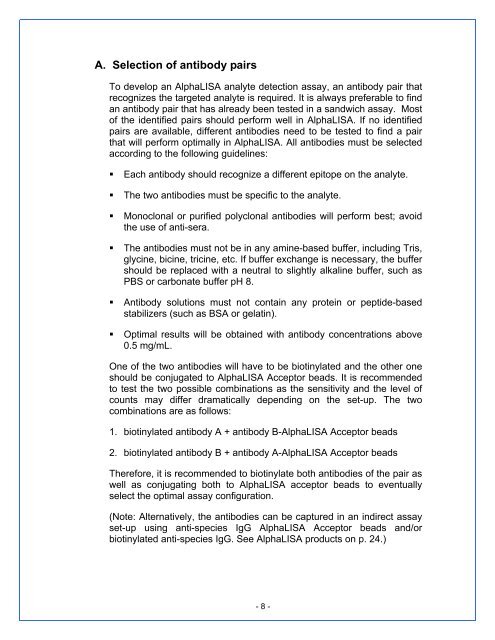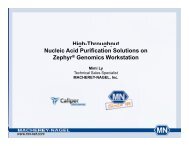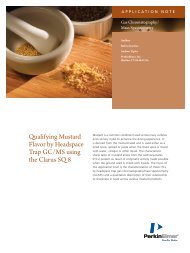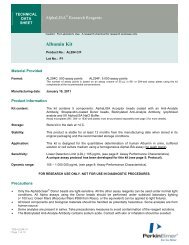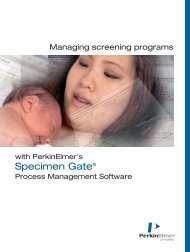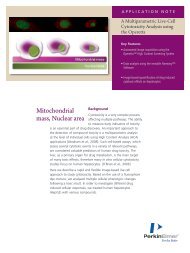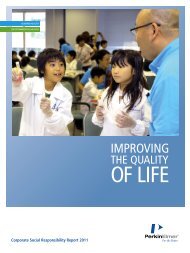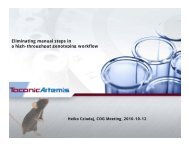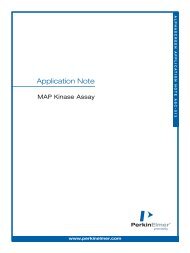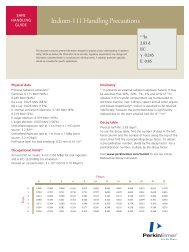AlphaLISA Assay Development Guide - PerkinElmer
AlphaLISA Assay Development Guide - PerkinElmer
AlphaLISA Assay Development Guide - PerkinElmer
You also want an ePaper? Increase the reach of your titles
YUMPU automatically turns print PDFs into web optimized ePapers that Google loves.
A. Selection of antibody pairs<br />
To develop an <strong>AlphaLISA</strong> analyte detection assay, an antibody pair that<br />
recognizes the targeted analyte is required. It is always preferable to find<br />
an antibody pair that has already been tested in a sandwich assay. Most<br />
of the identified pairs should perform well in <strong>AlphaLISA</strong>. If no identified<br />
pairs are available, different antibodies need to be tested to find a pair<br />
that will perform optimally in <strong>AlphaLISA</strong>. All antibodies must be selected<br />
according to the following guidelines:<br />
• Each antibody should recognize a different epitope on the analyte.<br />
• The two antibodies must be specific to the analyte.<br />
• Monoclonal or purified polyclonal antibodies will perform best; avoid<br />
the use of anti-sera.<br />
• The antibodies must not be in any amine-based buffer, including Tris,<br />
glycine, bicine, tricine, etc. If buffer exchange is necessary, the buffer<br />
should be replaced with a neutral to slightly alkaline buffer, such as<br />
PBS or carbonate buffer pH 8.<br />
• Antibody solutions must not contain any protein or peptide-based<br />
stabilizers (such as BSA or gelatin).<br />
• Optimal results will be obtained with antibody concentrations above<br />
0.5 mg/mL.<br />
One of the two antibodies will have to be biotinylated and the other one<br />
should be conjugated to <strong>AlphaLISA</strong> Acceptor beads. It is recommended<br />
to test the two possible combinations as the sensitivity and the level of<br />
counts may differ dramatically depending on the set-up. The two<br />
combinations are as follows:<br />
1. biotinylated antibody A + antibody B-<strong>AlphaLISA</strong> Acceptor beads<br />
2. biotinylated antibody B + antibody A-<strong>AlphaLISA</strong> Acceptor beads<br />
Therefore, it is recommended to biotinylate both antibodies of the pair as<br />
well as conjugating both to <strong>AlphaLISA</strong> acceptor beads to eventually<br />
select the optimal assay configuration.<br />
(Note: Alternatively, the antibodies can be captured in an indirect assay<br />
set-up using anti-species IgG <strong>AlphaLISA</strong> Acceptor beads and/or<br />
biotinylated anti-species IgG. See <strong>AlphaLISA</strong> products on p. 24.)<br />
- 8 -


